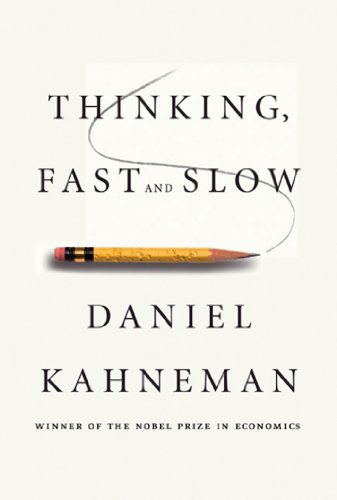

This article is an excerpt from the Shortform summary of "Thinking, Fast and Slow" by Daniel Kahneman. Shortform has the world's best summaries of books you should be reading.
Like this article? Sign up for a free trial here .
What are System 1 and System 2 thinking? How do they work in concert, and when should you rely on one or the other?
System 1 and System 2 thinking are two systems of thinking defined by Daniel Kahneman in Thinking, Fast and Slow. Generally, System 1 thinking is fast and System 2 thinking is slow.
We’ll cover how System 1 and System 2 thinking work together and when you should use one or the other.
System 1 and System 2 Thinking
Daniel Kahneman defines two systems of the mind: System 1 and System 2 thinking.
System 1 Thinking: operates automatically and quickly, with little or no effort, and no sense of voluntary control
- Examples: Detect that one object is farther than another; detect sadness in a voice; read words on billboards; understand simple sentences; drive a car on an empty road.
System 2 Thinking: allocates attention to the effortful mental activities that demand it, including complex computations. Often associated with the subjective experience of agency, choice and concentration
- Examples: Focus attention on a particular person in a crowd; exercise faster than is normal for you; monitor your behavior in a social situation; park in a narrow space; multiple 17 x 24.
System 1 and System 2 Thinking: How They Work Together
System 1 automatically generates suggestions, feelings, and intuitions for System 2 thinking. If endorsed by System 2, intuitions turn into beliefs, and impulses turn into voluntary actions.
System 1 can be completely involuntary. You can’t stop your brain from completing 2 + 2 = ?, or from considering a cheesecake as delicious. You can’t unsee optical illusions, even if you rationally know what’s going on.
A lazy System 2 accepts what the faulty System 1 gives it, without questioning. This leads to cognitive biases. Even worse, cognitive strain taxes System 2 thinking, making it more willing to accept System 1. Therefore, we’re more vulnerable to cognitive biases when we’re stressed.
Because Daniel Kahneman’s System 1 operates automatically and can’t be turned off, biases are difficult to prevent. Yet it’s also not wise (or energetically possible) to constantly question System 1, and System 2 thinking is too slow to substitute in routine decisions. We should aim for a compromise: recognize situations when we’re vulnerable to mistakes, and avoid large mistakes when the stakes are high.
Properties of Daniel Kahneman’s System 1 and System 2 Thinking
System 1 can arise from expert intuition, trained over many hours of learning. In this way a chess master can recognize a strong move within a second, where it would take a novice several minutes of System 2 thinking.
System 2 thinking requires attention and is disrupted when attention is drawn away. More on this next.
System 1 automatically generates suggestions, feelings, and intuitions for System 2. If endorsed by System 2 thinking, intuitions turn into beliefs, and impulses turn into voluntary actions.
System 1 can detect errors and recruits System 2 for additional firepower.
- Kahneman tells a story of a veteran firefighter who entered a burning house with his crew, felt something was wrong, and called for them to get out. The house collapsed shortly after. He only later realized that his ears were unusually hot but the fire was unusually quiet, indicating the fire was in the basement.
———End of Preview———

Like what you just read? Read the rest of the world's best summary of "Thinking, Fast and Slow" at Shortform . Learn the book's critical concepts in 20 minutes or less .
Here's what you'll find in our full Thinking, Fast and Slow summary :
- Why we get easily fooled when we're stressed and preoccupied
- Why we tend to overestimate the likelihood of good things happening (like the lottery)
- How to protect yourself from making bad decisions and from scam artists






